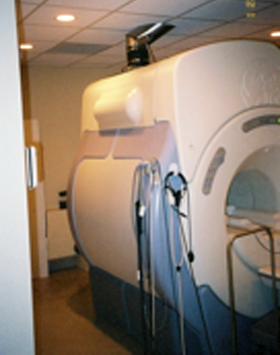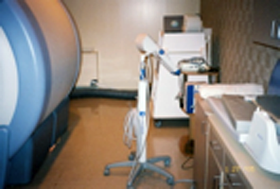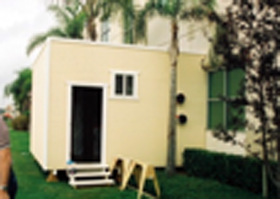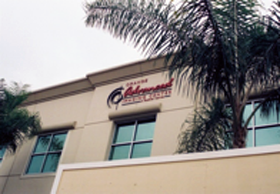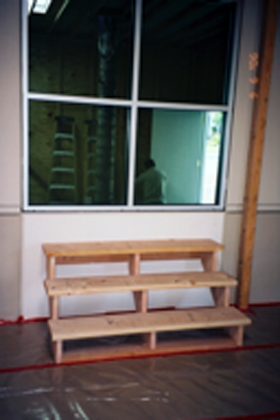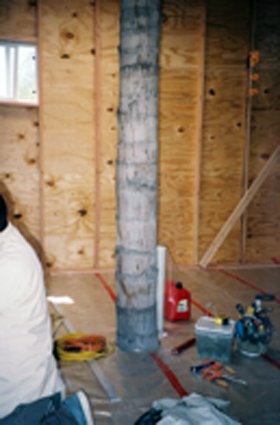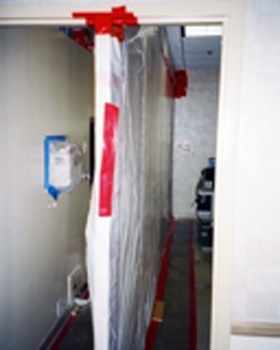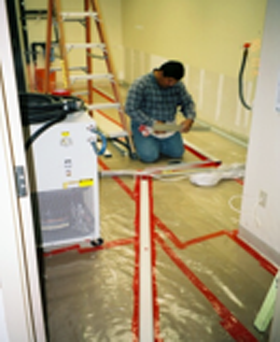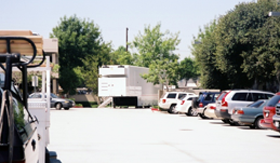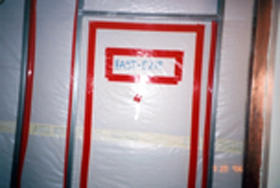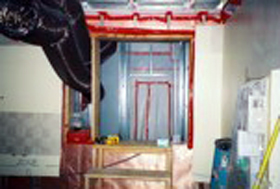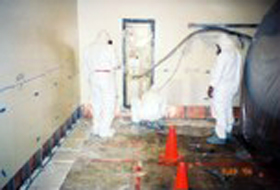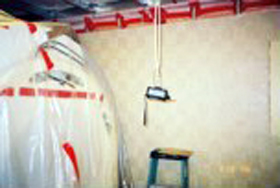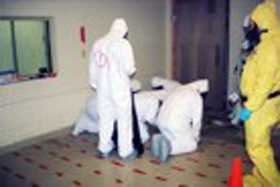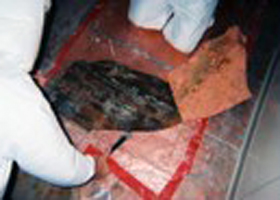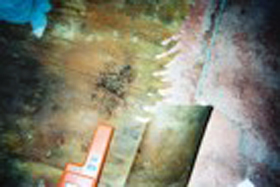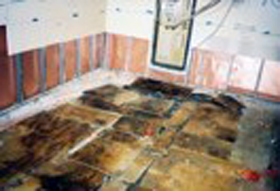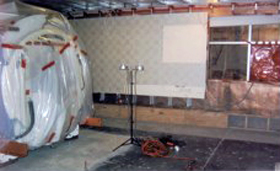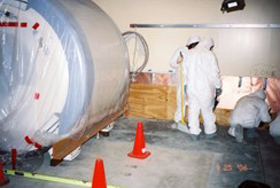Remediation of the MRI Room
Orange Imaging Center at 230 S. Main St. Orange CA.
The remediation of a Magnetic Resonance Imaging (MRI) room within a medical clinic was one of the most unique projects that Skalsky & Associates completed. In this particular case (Radnet Management Inc. v. David W. Clayton, et al. LA Sup.Crt BC-334531), a plumbing leak had resulted in the episodic flooding the floor in the MRI examination room.
The MRI room was completely (ceiling, wall, and floors) shielded with copper sheathing. Once the water from the plumbing leak penetrated the copper sheathing and entered the plywood subflooring, it could no longer escape by evaporation and provided ample moisture for mold growth. The flooring of the MRI room consisted of floor tile (12x12) and mastic on top of the copper sheathing and a plywood subfloor covering the concrete slab. No asbestos was dectcted in samples of the floor tile or the mastic.
The most prevalent fungi detected (in decreasing order) were Aspergillus versicolor, Eurotium herbariorum, Acremonium fusidiodes, Acremonium strictum, and Scopulariopsis brumptii. These fungi can produce mycotoxins and be causative agents in Organic Dust Toxic Syndrome or Hypersensitivity Pneumonitis.
The flooring of the MRI Room was not only colonized by fungi but also by Gram Negative Bacilli and mites. The outer membrane of gram negative bacteria contains a family of toxic lipopolysaccharide molecules that are collectively referred to as endotoxin. Endotoxin is encountered in the environment as part of the whole bacterial cell or as membrane fragments of those cells. Endotoxin and the allergens produced by mites are potent, biologically active agents that are particularly problematic for asthmatics

